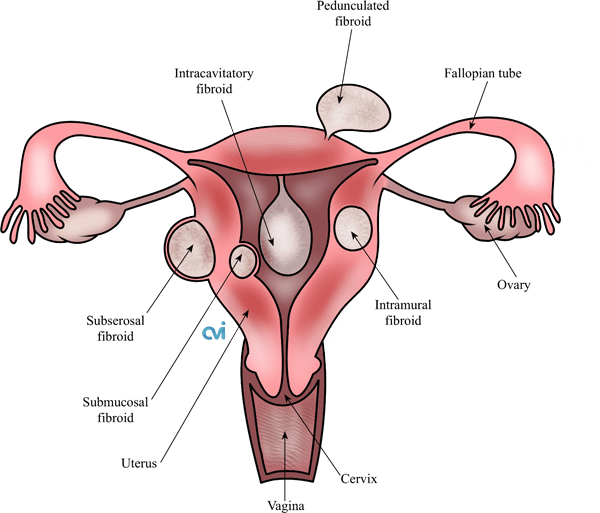Why did my OBGYN not mention or refer me for UFE
We have a lot of patients that ask us why they were never told that there was a non-surgical treatment available for their fibroids and/or adenomyosis. Commonly we hear that patients are told they need a hysterectomy and other options will not work for them.
The decision of whether to recommend uterine fibroid embolization (UFE) as a treatment for uterine fibroids depends on various factors, including the patient’s medical history, the severity of symptoms, and the physician’s expertise. While some obstetricians and gynecologists (OBGYNs) may refer patients for UFE, others may prefer to explore alternative treatment options or may not be as familiar with the procedure.
There are several reasons why some OBGYNs may not routinely refer patients for uterine fibroid embolization:
- Specialization: UFE is typically performed by interventional radiologists rather than OBGYNs. Some OBGYNs may not have close working relationships or easy access to interventional radiologists, which could influence their referral patterns.
- Personal Bias or Familiarity: Physicians may have varying levels of familiarity or comfort with different treatment modalities. Some OBGYNs may have personal biases or preferences for certain treatment options based on their training and experiences.
- Patient Preference: The decision on the most appropriate treatment often involves a discussion between the physician and the patient. Some patients may express a preference for surgical options, such as myomectomy or hysterectomy, which may be more familiar to OBGYNs.
- Lack of Awareness: OBGYNs may not be fully aware of the advancements in interventional radiology or may not be up-to-date on the latest research supporting the effectiveness of UFE. Continuing education and communication between medical specialties can help bridge this gap.
- Local Availability and Infrastructure: The availability of interventional radiology services can vary by location. In some areas, there may be limited access to facilities and specialists who perform UFE, making it less likely for OBGYNs to routinely refer patients for this procedure.
It’s essential for patients to have open and informed discussions with their healthcare providers about the available treatment options, including the potential benefits and risks of each. If a patient is interested in uterine fibroid embolization, they can seek a second opinion or ask their OBGYN for a referral to an interventional radiologist who specializes in the procedure. Additionally, collaborative communication between healthcare professionals from different specialties can contribute to more comprehensive and patient-centered care.
Contact us and get evaluated by our Boar Certified Vascular and Interventional Radiologist who performs a high number of embolizations. We would never ask a hand surgeon about the success rate of a brain surgery! You need to hear it from the expert as you may receive incorrect information by someone who has never seen nor performed an embolization procedure. Every procedure has limitations and is best explained by someone who is experienced and can evaluate your imaging and history to provide an accurate expectation from the treatment.
Uterine Fibroid Embolization (UFE)
UFE can help you get your life back without any scarring or hospital stay. It can reduce the size of your fibroids, relieve your symptoms, and retain your fertility. Most women can return to their normal activities in two to seven days.
How is the UFE performed?
- You will receive twilight sedation to help you relax
- Our specialist numbs the skin on the wrist or groin
- A tiny catheter is placed
- Small beads are placed into the fibroid artery
- The catheter is removed
- Band-Aid is applied
- Recover at home
Some of the UFE advantages include:
- No hospital stay
- No general anesthesia
- No stitches
- No blood loss
- No risk of hysterectomy
- No major scars
- No surgical risks
We are Here to Help
Request an appointment to meet with our fibroid specialist who will review your imaging, labs and history to determine if you are candidate for the procedure, and the outcomes you can expect. Each woman is an individual and should discuss the potential risks and benefits of fibroid embolization and other Treatments with our doctor to decide which option is best for her.
Appointments are available via an online video telehealth platform or in person at one of the offices in Los Angeles, Orange County or San Diego. Why should you choose us? Read here.
- Stewart EA. Uterine fibroids. N Engl J Med. 2015;372(17):1646-1655.
- Marsh EE, Al-Hendy A, Kappus D, Galitsky A, Stewart EA, Kerolous M. Burden, prevalence, and treatment of uterine fibroids: a survey of US women. J Womens Health (Larchmt). 2018;27(11):1359-1367.
- Gupta S, Jose J, Manyonda I. Clinical presentation of fibroids. Best Pract Res Clin Obstet Gynaecol. 2008;22(4):615-626.
- Somigliana E, Vercellini P, Daguati R, Pasin R, De Giorgi O, Crosignani PG. Fibroids and female reproduction: a critical analysis of the evidence. Hum Reprod Update. 2007;13(5):465-476.
- Lieng M, Berner E, Busund B. Prevalence of adenomyosis diagnosed by transvaginal ultrasound in women with infertility. Acta Obstet Gynecol Scand. 2015;94(9):989-994.
- Magon N, Kandpal S. Urinary problems in females with large uterine fibroids. Int J Gynaecol Obstet. 2011;115(2):194-195.
- Wolanske KA, Gordon RL, Olsen D, et al. Uterine artery embolization: where do we stand in 2002? J Vasc Interv Radiol. 2002;13(10):1085-1095.
- Gupta JK, Sinha A, Lumsden MA, Hickey M. Uterine artery embolization for symptomatic uterine fibroids. Cochrane Database Syst Rev. 2014;(12):CD005073.
- Gupta JK, Sinha A, Lumsden MA, Hickey M. Uterine artery embolization versus surgical treatment for symptomatic uterine fibroids. Cochrane Database Syst Rev. 2014;(12):CD005073.
- Park JY, Park SK, Kim DY, Kim JH, Kim YM, Kim YT, Nam JH. The impact of tumor morcellation during surgery on the prognosis of patients with apparently early uterine leiomyosarcoma. Gynecol Oncol. 2011;122(2):255-259.
- Berman JM. Sexual function and fertility quality of life in women using magnetic resonance-guided focused ultrasound and uterine artery embolization for symptomatic fibroids. J Minim Invasive Gynecol. 2011;18(6):802-808.
- De La Cruz MS, Buchanan EM. Uterine fibroids: diagnosis and treatment. Am Fam Physician. 2017;95(2):100-107.









